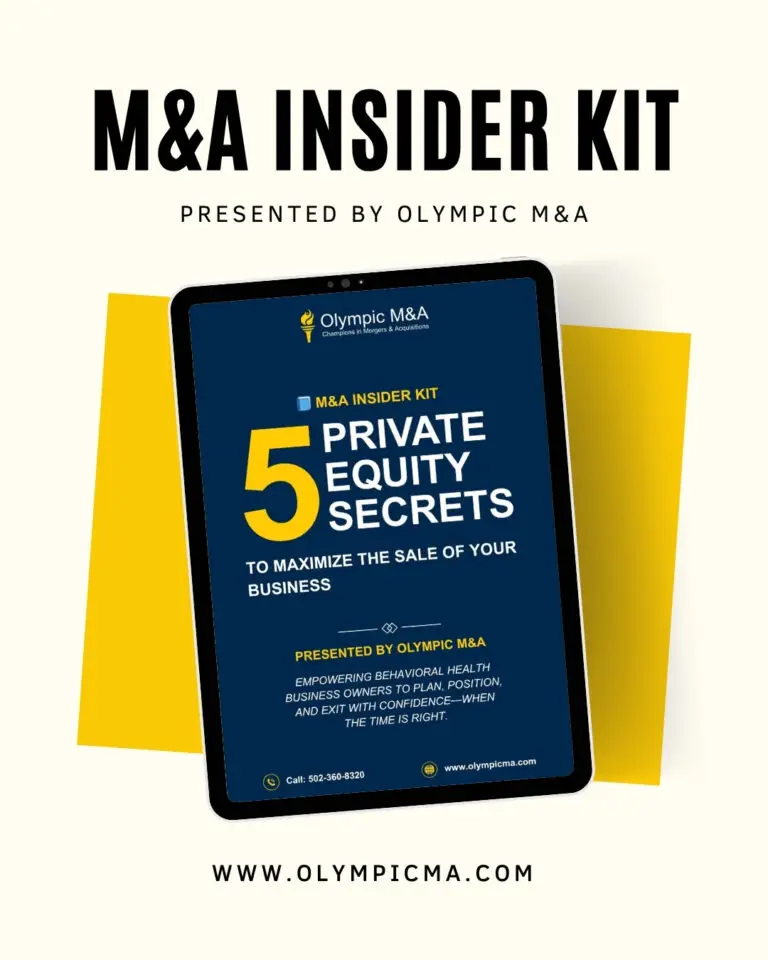Selling your Employee Assistance Program (EAP) business can unlock significant value—but only if the process is handled correctly. Too often, owners enter the M&A process unprepared, leaving money on the table or facing unnecessary deal friction.
📘Want to avoid the costly mistakes sellers often make?
Download our free guide: “5 Private Equity Secrets: How to Maximize the Sale of Your EAP Business.” It outlines how buyers assess value, reduce leverage, and structure deals—and how you can flip those dynamics in your favor.
At Olympic M&A, we’ve helped EAP owners navigate complex transactions and avoid the most common (and costly) missteps. If you’re thinking about a sale in the next 6 to 24 months, here are the pitfalls to watch for—and how to avoid them.
1. Waiting Too Long to Prepare
Many owners delay preparation until they’re ready to sell. But by then, it’s often too late to make the operational and financial improvements that drive value.
What to do instead:
Start preparing 12–24 months in advance. Clean up financials, document processes, and strengthen client contracts before you speak to a single buyer.
2. Underestimating the Importance of EBITDA
Too many EAP owners think buyers still value businesses based solely on revenue. That’s outdated thinking. Most buyers now apply an EBITDAmultiple—especially for add-on acquisitions.
What to do instead:
Understand your true earnings. Work with a CPA or M&A advisor to normalize EBITDA and identify value-add adjustments before going to market.
3. Not Knowing Your Buyer
Every buyer is different. Some are strategic players who want integration potential; others are financial buyers focused on scale and EBITDA growth.
What to do instead:
Clarify your ideal exit path—full sale, partial rollover, or partnership—and align with the right type of buyer who values your specific strengths.
4. Failing to Address Owner Dependence
If you’re the linchpin for every decision and client relationship, buyers will see risk—and reduce their offer accordingly.
What to do instead:
Build a transition-ready team. Empower clinical and operational leads, and ensure documented SOPs are in place before diligence begins.
5. Overlooking Diligence Readiness
M&A diligence is rigorous. If your financials, contracts, or compliance records are incomplete or disorganized, you risk deal delays—or worse, deal failure.
What to do instead:
Before going to market, build a virtual diligence folder with key items: governance documents, contracts, financials, licenses, insurance, and compliance protocols.
6. Entering the Market Without Representation
Many EAP owners try to sell on their own, only to find themselves outmaneuvered during negotiations or underpaid for their business.
What to do instead:
Work with an experienced M&A advisor who understands the behavioral health landscape and knows how to run a competitive process. The right advisor will protect your value and your time.
Final Thoughts
Selling your EAP business is one of the most important financial decisions you’ll ever make. Avoiding these common pitfalls can mean the difference between a good outcome—and a great one.
At Olympic M&A, we’ve helped EAP owners avoid these traps and unlock greater value through better preparation, buyer alignment, and strategic guidance.
To learn more about preparing your EAP business for sale and navigating private equity transactions, download our free “5 Private Equity Secrets” guide here.
For a confidential conversation about your options, contact Tony Siebel at 502.360.8320 or email tonys@olympicma.com.
Connect with Tony on LinkedIn: linkedin.com/in/tonysiebel









